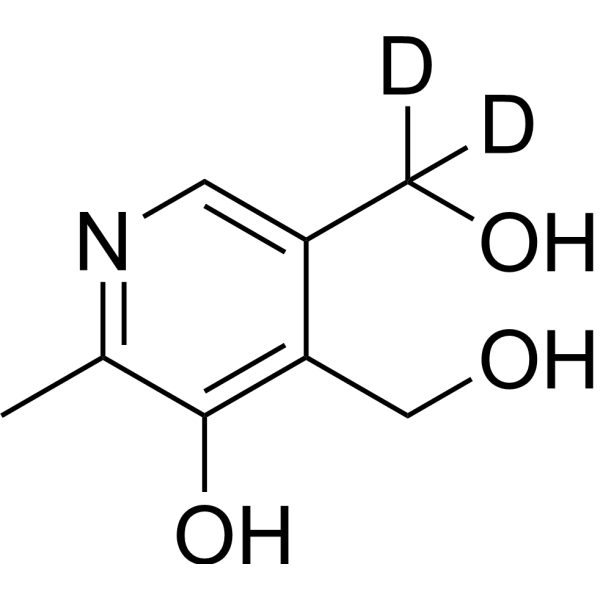- Anti-infection
- Antibody-drug Conjugate/ADC Related
- Apoptosis
- Autophagy
- Cell Cycle/DNA Damage
- Cytoskeleton
- Epigenetics
- GPCR/G Protein
- Immunology/Inflammation
- JAK/STAT Signaling
- MAPK/ERK Pathway
- Membrane Transporter/Ion Channel
- Metabolic Enzyme/Protease
- Neuronal Signaling
- NF-κB
- PI3K/Akt/mTOR
- PROTAC
- Protein Tyrosine Kinase/RTK
- Stem Cell/Wnt
- TGF-beta/Smad
- Vitamin D Related/Nuclear Receptor
- Others
Anti-infection
Apoptosis
Cell Cycle/DNA Damage
Cytoskeleton
Epigenetics
GPCR/G Protein
- 5-HT Receptor
- Adenylate Cyclase
- Adhesion G Protein-coupled Receptors (AGPCRs)
- Adrenergic Receptor
- Amylin Receptor
- Angiotensin Receptor
- Apelin Receptor (APJ)
- Arf Family GTPase
- Arrestin
- Bombesin Receptor
- Bradykinin Receptor
- Cannabinoid Receptor
- CaSR
- CCR
- CGRP Receptor
- Chemerin Receptor
- Cholecystokinin Receptor
- CRFR
- CXCR
- EBI2/GPR183
Immunology/Inflammation
Membrane Transporter/Ion Channel
Metabolic Enzyme/Protease
- 11β-HSD
- 15-PGDH
- 17β-HSD
- 3β-HSD
- 5 alpha Reductase
- Acetolactate Synthase (ALS)
- Acetyl-CoA Carboxylase
- Acetyl-CoA synthetase
- Acyltransferase
- ADAMTS
- Adiponectin Receptor
- Aldehyde Dehydrogenase (ALDH)
- Aldehyde Oxidase (AO)
- Aldose Reductase
- Amine N-methyltransferase
- Amino Acid Oxidase
- Aminoacyl-tRNA Synthetase
- Aminopeptidase
- Aminotransferases (Transaminases)
- Amylases
Neuronal Signaling
- 5-HT Receptor
- AAK1
- Adrenergic Receptor
- Amino Acid Decarboxylase
- Amyloid-β
- Beta-secretase
- Calcineurin
- Calcium Channel
- CaMK
- Cannabinoid Receptor
- CGRP Receptor
- Cholecystokinin Receptor
- Choline Kinase
- Cholinesterase (ChE)
- COMT
- Dihydroceramide Desaturase 1 (DES1)
- Dimethylargininase (DDAH)
- FAAH
- GABA Receptor
- Glucosylceramide Synthase (GCS)
Protein Tyrosine Kinase/RTK
Stem Cell/Wnt
- Compound Screening Libraries
- Bioactive Screening Libraries
- •Bioactive Compound Library
- Drug Repurposing Series
- •FDA-Approved Drug Library
- •Drug Repurposing Compound Library
- Natural Products Series
- •Natural Product Library
- •Natural Product-like Compound Library
- Metabolism Series
- •Human Endogenous Metabolite Compound Library
- Disease Related Compound Libraries
- Signaling Pathway Series
- Fragment Libraries
- Diversity Compound Libraries
- •50K Diversity Library
- •5K Scaffold Library
- •3D Diverse Fragment Library
- Virtual Screening
- •50K Virtual Diversity Library
- •10M Virtual Diversity Library
- Recombinant Proteins
- Cytokines and Growth Factors
- Immune Checkpoint Proteins
- CAR-T Related Proteins
- CD Antigens
- Fc Receptors
- Receptor Proteins
- Enzymes & Regulators
- Complement System
- Ubiquitin Related Proteins
- Viral Proteins
- Biotinylated Proteins
- Fluorescent-labeled Recombinant Proteins
- GMP-grade Proteins
- Animal-free Recombinant Proteins
- Protein Expression Service
- Custom Synthesis Service
- ADC-Related Custom Services
- PROTAC-Related Custom Services
- Cytokines and Growth Factors
- Immune Checkpoint Proteins
- CAR-T Related Proteins
- CD Antigens
- Fc Receptors
- Receptor Proteins
- Enzymes & Regulators
- Complement System
- Ubiquitin Related Proteins
- Viral Proteins
- Biotinylated Proteins
- Fluorescent-labeled Recombinant Proteins
- GMP-grade Proteins
- Animal-free Recombinant Proteins
- Others
- View More
CAR-T Related Proteins
- CD27 Ligand/CD70
- CD4
- CD19
- CD27 Ligand/CD70
- CD123
- CD138/Syndecan-1
- Epithelial Cell Adhesion Molecule (EpCAM)
- Folate Receptor 1
- GPC-3
- Guanylate Cyclase 2C
- ErbB2/HER2
- ErbB3/HER3
- c-Met/HGFR
- MSLN
- CA-125
- ROR1
- CEACAM-5
- CD314/NKG2D
- Prostate Specific Membrane Antigen
- CD319/SLAMF7
- TROP-2
- Siglec-6
- Folate Receptor alpha (FR-alpha)
- CD314/NKG2D
- Siglec-3/CD33
- CD27 Ligand/CD70
- CD319/SLAMF7
- ErbB2/HER2
- Siglec-3/CD33
- CD7
- MUC-1/CD227
CD Antigens
- T Cell CD Proteins
- B Cell CD Proteins
- NK Cell CD Proteins
- Macrophage CD Proteins
- Monocyte CD Proteins
- Stem Cell CD Proteins
- Platelet CD Proteins
- Erythrocyte CD Proteins
- Dendritic Cell CD Proteins
- Epithelial cell CD Proteins
- Endothelial cell CD Proteins
- Signal Transduction-related CD Proteins
- Cell Adhesion-related CD Proteins
Receptor Proteins
- Receptor Tyrosine Kinases
- Receptor Serine/Threonine Kinases
- Receptor Tyrosine Phosphatase
- Receptor Guanylyl Cyclase Family
- Cell Adhesion Molecules (CAMs)
- G-Protein-Coupled Receptors (GPCRs)
- Nuclear Receptor Superfamily
- Pattern Recognition Receptors
- Notch family
- Siglec
- Leukocyte Immunoglobin-like Receptors
- Killer-Cell Immunoglobulin-like Receptors
- Cytokine Receptors
Enzymes & Regulators
- Oxidoreductases (EC 1)
- Transferases (EC 2)
- Hydrolases (EC 3)
- Lyases (EC 4)
- Isomerases (EC 5)
- Ligases (EC 6)
- Translocases (EC 7)
- Matrix Metalloproteinases
- ADAMs/ADAMTSs
- Cathepsin
- Carboxypeptidase
- Angiotensin-converting Enzymes
- Caspase
- Carbonic Anhydrase
- Serine/Threonine Kinase Proteins
- Protein Tyrosine Kinases
- Phosphatase
- Topoisomerase
- Protease Inhibitors
- Protein Kinase Inhibitor Peptide (PKI)
- Cyclin-Dependent Kinase Inhibitor Proteins
- Cystatin Family
- Molecular Biology
- •Nucleic Acid Gel Electrophoresis
- •Vector Construction
- •Restriction Endonuclease
- •Materials
- •PCR & qPCR
- •RT-PCR
- •Sequencing
- Protein Biology
- •Protein Sample Preparation
- •Protein Purification
- •Protein Electrophoresis & WB
- •Multiple Fluorescent Staining
- •Immunoassay
- •Immunoprecipitation Kit
- •Labeling Kit
- Cell Biology
- •Cell Culture
- •Cell Analysis
- •3D Cell Culture
- •Cell Isolation
- View More
Cell Analysis
- Cell Proliferation and Cytotoxicity
- Reporter Gene Testing
- Phalloidin Dye Conjugates
- Cell Apoptosis and Necrosis
- AntiFade Mounting Medium
- Mitochondrial Isolation
- Exosome Isolation, Purification and Detection
- Organelle Research
- Metabolism Assay Kit
- Mycoplasma Detection
- Biochemical Assay Kit
- Endotoxin Detection
- Quality Management System
- Custom Synthesis Service
- Bulk and Custom Synthesis Service
- ADC-Related Custom Services
- PROTAC-Related Custom Services
- Custom Reference Standard Products
- Custom Peptide Synthesis
- Protein Expression Service
- Recombinant Antibody Expression Service
- Protein Crystal Structure Elucidation
- Oligonucleotide Synthesis
- Gene Regulation Tool
- • Lentivirus Packaging
- • Adenovirus Packaging
- Fluorescent Labeling Service
- Custom Synthesis of Stable Isotope-Labeled Compounds
- One-stop CDMO Service
- One-stop Compound Screening Platform
- Virtual Screening
- Molecular Dynamics Simulation
- Cell-based Compound Screening
- Ion Channel Screening
- Kinase Screening Service
- SPR Assay Service
- GPCR Bioassay Screening Services
- Nuclear Receptor Screening Services
- Affinity Mass Spectrometry
- DEL Synthesis and Screening
- Molecular Interaction Assay Service
- Drug Target Identification Service
- AI Driven Drug Screening
- Molarity Calculator
- Dilution Calculator












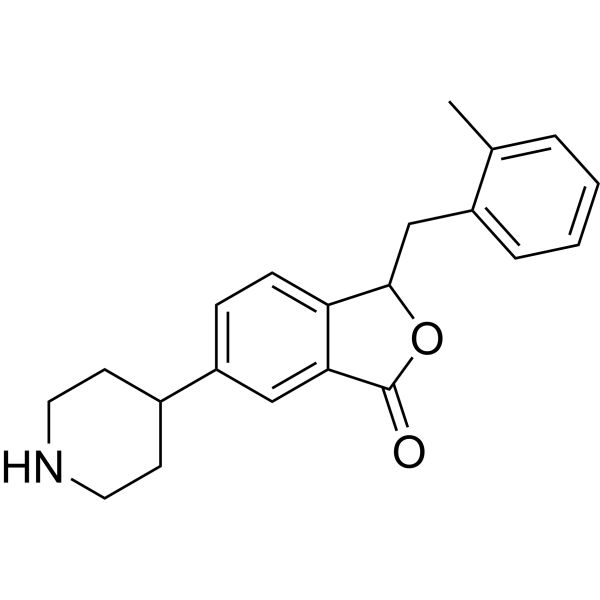















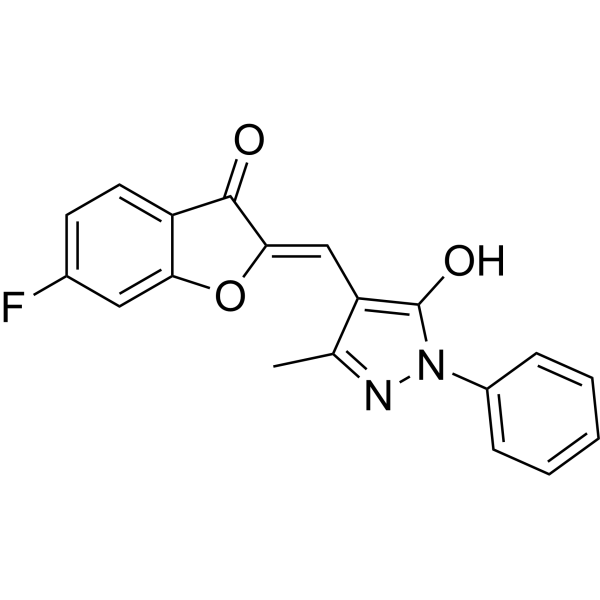






















































































![Ac-[Nle4,D-Phe7]-α-MSH (4-10)-NH2](http://file.medchemexpress.eu/product_pic/hy-p3662.gif)























































































































































































![[Lys4] Sarafotoxin S6c](http://file.medchemexpress.eu/product_pic/hy-p3563.gif)













































































































































































![(1R,4R)-Thalidomide-2,5-diazabicyclo[2.2.1]heptane-(1R,4r)-cyclohexane-NH-Boc](http://file.medchemexpress.eu/product_pic/hy-163227.gif)





























![7-[(1R,2R,3R)-3-Hydroxy-2-[(3S)-3-hydroxyoctyl]-5-oxocyclopentyl]heptanoyl-CoA](http://file.medchemexpress.eu/product_pic/hy-ce01344.gif)
































































![7-[(1R,2R,3R,5S)-3,5-Dihydroxy-2-[(3S)-3-hydroxyoctyl]cyclopentyl]heptanoyl-CoA](http://file.medchemexpress.eu/product_pic/hy-ce01345.gif)



































![RuCl(p-cymene)[(R,R)-Ts-DPEN]](http://file.medchemexpress.eu/product_pic/hy-w001069.gif)
















































































































































![(1R,5S)-Thalidomide-3,8-diazabicyclo[3.2.1]octane-(1R,4r)-cyclohexane-NH-Boc](http://file.medchemexpress.eu/product_pic/hy-163226.gif)





























































































































































































































































































































































































































































![(3aR,4R,5R,7S,8S,9R,9aS,12R)-8-Hydroxy-4,7,9,12-tetramethyl-3-oxo-7-vinyldecahydro-4,9a-propanocyclopenta[8]annulen-5-yl 2-(tosyloxy)acetate (Tiamulin Impurity) (Standard)](http://file.medchemexpress.eu/product_pic/hy-z8760r.gif)













































































![rel-(1R,3r,5S)-9-Methyl-9-azabicyclo[3.3.1]nonan-3-amine dihydrochloride (Standard)](http://file.medchemexpress.eu/product_pic/hy-w076454r.gif)


































![[(3R)-3-Hydroxydodecanoyl]-L-carnitine](http://file.medchemexpress.eu/product_pic/hy-133872.gif)
































































































































![(1R,2S,4R)-rel-1-Azabicyclo[2.2.1]heptane-2-carboxylic acid hydrochloride](http://file.medchemexpress.eu/product_pic/hy-70045.gif)

























![(4S)-3-[(2R)-2-[(2R)-2-(2,4-Difluorophenyl)oxiranyl]-1-oxopropyl]-4-benzyl-2-oxazolidinone-d3](http://file.medchemexpress.eu/product_pic/hy-132672s.gif)













































































![(R)-1-(Benzo[d][1,3]dioxol-5-yl)butan-1-amine hydrochloride](http://file.medchemexpress.eu/product_pic/hy-75775.gif)























![N-methyl-N-((3R,4R)-4-methylpiperidin-3-yl)-7H-pyrrolo[2,3-d]pyrimidin-4-amine (Standard)](http://file.medchemexpress.eu/product_pic/hy-40352r.gif)





























































































![N-Methyl-N-((3R,4R)-4-methylpiperidin-3-yl)-7H-pyrrolo[2,3-d]pyrimidin-4-amine dihydrochloride](http://file.medchemexpress.eu/product_pic/hy-40352b.gif)
![N-Methyl-N-((3R,4R)-4-methylpiperidin-3-yl)-7H-pyrrolo[2,3-d]pyrimidin-4-amine](http://file.medchemexpress.eu/product_pic/hy-40352.gif)
























































































































































































































![[2(R,S)-2-Sulfanylheptanoyl]-Phe-Ala-CoA](http://file.medchemexpress.eu/product_pic/hy-ce01909.gif)

























![3-((3R,4R)-4-methyl-3-(methyl(7H-pyrrolo[2,3-d]pyrimidin-4-yl)amino)piperidin-1-yl)-3-oxopropanamide (Standard)](http://file.medchemexpress.eu/product_pic/hy-78558r.gif)
![N-((1R,3r,5S)-9-Methyl-9-azabicyclo[3.3.1]nonan-3-yl)-1H-indazole-3-carboxamide (Granisetron Impurity) (Standard)](http://file.medchemexpress.eu/product_pic/hy-z8213r.gif)
























































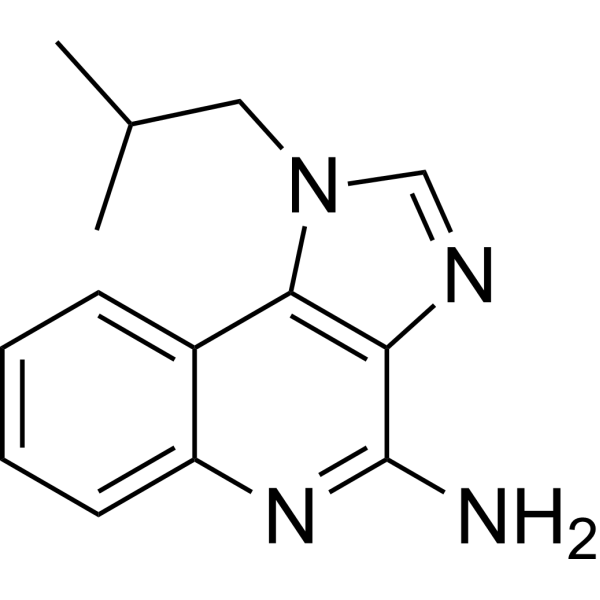












































































































![2-Methyl-N-((1R,3r,5S)-9-methyl-9-azabicyclo[3.3.1]nonan-3-yl)-2H-indazole-3-carboxamide (Granisetron Impurity) (Standard)](http://file.medchemexpress.eu/product_pic/hy-z9078r.gif)










![(1S,3S,4R)-Ethyl 2-((R)-1-phenylethyl)-2-azabicyclo[2.2.1]hept-5-ene-3-carboxylate](http://file.medchemexpress.eu/product_pic/hy-78790.gif)





![(2'R,7R,8R,10S,13S,14S)-Methyl 10,13-dimethyl-3,5'-dioxo-1,2,3,4',5',6,7,8,10,12,13,14,15,16-tetradecahydro-3'H-spiro[cyclopenta[a]phenanthrene-17,2'-furan]-7-carboxylate (Standard)](http://file.medchemexpress.eu/product_pic/hy-w105644r.gif)



![8-[(2R,3S)-3-(8-Hydroxyoctyl)oxiran-2-yl]octanoyl-CoA](http://file.medchemexpress.eu/product_pic/hy-ce01560.gif)































![[(R)-2-(Phenylphosphonomethoxy)propyl]adenine-d5](http://file.medchemexpress.eu/product_pic/hy-w747167.gif)





![CCR2-RA-[R]](http://file.medchemexpress.eu/product_pic/hy-50081.gif)

























































































![(2R)-2-[(3,5-Dinitrobenzoyl)amino]-2-phenyl-acetic acid](http://file.medchemexpress.eu/product_pic/hy-w125501.gif)
![2-Amino-4-chloro-N-[(1R,2R)-2-(2,4-difluorophenyl)-2-hydroxy-1-methyl-3-(1H-1,2,4-triazol-1-yl)propyl]benzamide-d3](http://file.medchemexpress.eu/product_pic/hy-132698s.gif)


















































































































![(R)-5-bromo-3-[(1-methyl-2-pyrrolidinyl)methyl]-1H-indole (Standard)](http://file.medchemexpress.eu/product_pic/hy-20004r.gif)
















![[K15,R16,L27]VIP(1-7)/GRF(8-27) acetate](http://file.medchemexpress.eu/product_pic/hy-p4195a.gif)
















![(R)-[1,1'-Binaphthalene]-2,2'-diamine](http://file.medchemexpress.eu/product_pic/hy-w007978.gif)




















![(R)-Octahydro-pyrido[1,2-A]pyrazine](http://file.medchemexpress.eu/product_pic/hy-w044751.gif)



























![Boc-(R)-4-[4-(trifluoromethyl)benzyl]-L-proline](http://file.medchemexpress.eu/product_pic/hy-w142047.gif)













































































































































































![(1R,5S)-Thalidomide-3,8-diazabicyclo[3.2.1]octane-Boc](http://file.medchemexpress.eu/product_pic/hy-163230.gif)








































































































































![(3R,5S)-5-([1,1′-Biphenyl]-4-ylmethyl)-3-methyl-2-pyrrolidinone](http://file.medchemexpress.eu/product_pic/hy-79080.gif)



















































![[(2R)-3,3,4-Trimethyl-6-oxo-3,6-dihydro-1H-pyran-2-yl]acetyl-CoA](http://file.medchemexpress.eu/product_pic/hy-ce01907.gif)





![(S,R,S)-AHPC-CO-bicyclo[2.2.2]octane-CHO](http://file.medchemexpress.eu/product_pic/hy-159537.gif)








![(R)-2-(9-(Pyridin-2-yl)-6-oxaspiro[4.5]decan-9-yl)acetonitrile](http://file.medchemexpress.eu/product_pic/hy-w033729.gif)










![(2S,4R)-5-([1,1'-Biphenyl]-4-yl)-4-((tert-butoxycarbonyl)amino)-2-methylpentanoic acid (Standard)](http://file.medchemexpress.eu/product_pic/hy-78845r.gif)
![tert-Butyl [(4R,6S)-6-formyl-2,2-dimethyl-1,3-dioxan-4-yl]acetate (Standard)](http://file.medchemexpress.eu/product_pic/hy-w042234r.gif)











![(2R,4S)-5-(Biphenyl-4-yl)-4-[(tert-butoxycarbonyl)amino]-2-methylpentanoic acid](http://file.medchemexpress.eu/product_pic/hy-78837.gif)














![[Lys5,Tyr6,mLeu9,Nle10]-Neurokinin A (4-10)](http://file.medchemexpress.eu/product_pic/hy-p11075.gif)









































![(2R,4S)-ethyl 5-([1,1'-biphenyl]-4-yl)-4-((tert-butoxycarbonyl)amino)-2-methylpentanoate (Standard)](http://file.medchemexpress.eu/product_pic/hy-z0066r.gif)




![[R-(Z)]-4-Amino-3-chloro-2-pen-tenedioicacid](http://file.medchemexpress.eu/product_pic/hy-n14921.gif)




































































































![3-Methyl-N-{[(2-methyl-2-propanyl)oxy]carbonyl}-L-valyl-(4R)-4-hydroxy-L-proline](http://file.medchemexpress.eu/product_pic/hy-42418.gif)











![(2S,4R)-5-([1,1'-Biphenyl]-4-yl)-4-((tert-butoxycarbonyl)amino)-2-methylpentanoic acid](http://file.medchemexpress.eu/product_pic/hy-78845.gif)



























![[K15,R16,L27]VIP(1-7)/GRF(8-27)](http://file.medchemexpress.eu/product_pic/hy-p4195.gif)






























![(2R,4S)-Ethyl 5-([1,1'-biphenyl]-4-yl)-4-((tert-butoxycarbonyl)amino)-2-methylpentanoate](http://file.medchemexpress.eu/product_pic/hy-z0066.gif)








![Platinum, dichloro(1,2-cyclohexanediamine-n,n')-, [sp-4-2-(1r-trans)]- (Standard)](http://file.medchemexpress.eu/product_pic/hy-w414840r.gif)































![(S,R,S)-AHPC-CO-spiro[3.3]heptane-Ph-CHO](http://file.medchemexpress.eu/product_pic/hy-159487.gif)










![tert-Butyl((1S,5R,6S)-3-azabicyclo[3.3.0]octan-6-yl)carbamate](http://file.medchemexpress.eu/product_pic/hy-76645.gif)







































































![N-6-[rel-(2R,6S)-2,6-Dimethyl-4-morpholinyl]-3-pyridinamine-Sonidegib-d8](http://file.medchemexpress.eu/product_pic/hy-157571s.gif)








![t-Butyl (3R,5S)-7-[2-cyclopropyl-4-(4-fluorophenyl)quinolin-3-yl]-3,5-isopropylidenedioxy-6-heptenoate (Standard)](http://file.medchemexpress.eu/product_pic/hy-w108710r.gif)










![D-myo-Inositol, 1-[(2R)-2-hydroxy-3-[(1-oxononadecyl)oxy]propyl-1,1,2,3,3-d5 hydrogen phosphate], ammonium salt (1:1)](http://file.medchemexpress.eu/product_pic/hy-146862s.gif)
![D-myo-Inositol, 1-[(2R)-2-hydroxy-3-[(1-oxoheptadecyl)oxy]propyl-1,1,2,3,3-d5 hydrogen phosphate], ammonium salt (1:1)](http://file.medchemexpress.eu/product_pic/hy-146872s.gif)
![D-myo-Inositol, 1-[(2R)-2-hydroxy-3-[(1-oxopentadecyl)oxy]propyl-1,1,2,3,3-d5 hydrogen phosphate], ammonium salt (1:1)](http://file.medchemexpress.eu/product_pic/hy-146871s.gif)





![NH2-c[X-R-L-S-X]-K-G-P-(D-1Nal)](http://file.medchemexpress.eu/product_pic/hy-p3346.gif)










![tert-Butyl (1S,4S,5R)-5-hydroxy-2-azabicyclo[2.2.1]heptane-2-carboxylate](http://file.medchemexpress.eu/product_pic/hy-34550a.gif)















![2-Methyl-2-propanyl(1S,8R)-4-nitro-11-azatricyclo[6.2.1.02,7]undeca-2,4,6-triene-11-carboxylate](http://file.medchemexpress.eu/product_pic/hy-77304.gif)







![2-(((3aR,4S,6R,6aS)-6-(7-(((1R,2S)-2-(3,4-Difluorophenyl)cyclopropyl)amino)-5-(propylthio)-3H-[1,2,3]triazolo[4,5-d]pyrimidin-3-yl)-2,2-dimethyltetrahydro-3aH-cyclopenta[d][1,3]dioxol-4-yl)oxy)ethanol (Standard)](http://file.medchemexpress.eu/product_pic/hy-77732r.gif)
























































![((3aR,4R,6R,6aR)-6-((E)-4-(Hydroxyimino)-2-oxo-3,4-dihydropyrimidin-1(2H)-yl)-2,2-dimethyltetrahydrofuro[3,4-d][1,3]dioxol-4-yl)methyl isobutyrate](http://file.medchemexpress.eu/product_pic/hy-45219.gif)

















![(2S,5R)-6-(Benzyloxy)-7-oxo-1,6-diazabicyclo[3.2.1]octane-2-carboxamide](http://file.medchemexpress.eu/product_pic/hy-79858.gif)
































![2H-1-Benzopyran-2-one, 6-[(1R,2S)-2,3-dihydroxy-1-methoxy-3-methylbutyl]-7-methoxy-](http://file.medchemexpress.eu/product_pic/hy-n10856.gif)











![(3S,8R,9S,10R,13S,14S)-10,13-Dimethyl-17-(trifluoromethylsulfonyloxy)-2,3,4,7,8,9,10,11,12,13,14,15-dodecahydro-1H-cyclopenta[a]phenanthren-3-yl acetate](http://file.medchemexpress.eu/product_pic/hy-75624.gif)

![[Tyr(P)4] Angiotensin II](http://file.medchemexpress.eu/product_pic/hy-p2563.gif)



















![[(1R)-2,2,3-Trimethyl-5-oxocyclopent-3-enyl]acetyl-CoA](http://file.medchemexpress.eu/product_pic/hy-ce01906.gif)

















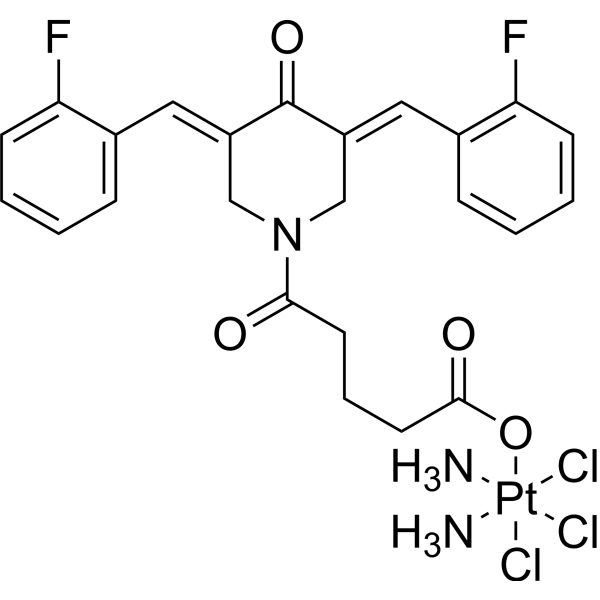






![(3aR,4S,6R,6aS)-6-Amino-2,2-dimethyltetrahydro-3aH-cyclopenta[d][1,3]dioxol-4-ol (Standard)](http://file.medchemexpress.eu/product_pic/hy-78720r.gif)

















![(1S,3aR,6aS)-(2S)-2-Cyclohexyl-N-(2-pyrazinylcarbonyl)glycyl-3-methyl-L-valyl-N-[(1R)-1-[2-(cyclopropylamino)-2-oxoacetyl]butyl]octahydrocyclopenta[c]pyrrole-1-carboxamide-d4](http://file.medchemexpress.eu/product_pic/hy-a0052s.gif)

![[Sar1, Ile8]-Angiotensin II](http://file.medchemexpress.eu/product_pic/hy-p1564.gif)













![NH2-c[X-R-L-S-X]-K-G-P-(D-2Nal)](http://file.medchemexpress.eu/product_pic/hy-p3347.gif)
































![[Sar1, Ile8]-Angiotensin II TFA](http://file.medchemexpress.eu/product_pic/hy-p1564a.gif)



























![1-[(2R)-N’-Boc-2-amino-2-cyclohexylacetyl]-N-(4’-cyanobenzyl)-2-L-azetidinecarboxamide-d11](http://file.medchemexpress.eu/product_pic/hy-132728s.gif)










































































































![P-Toluenesulfonic Acid (3S,5R)-5-(2,4-Difluorophenyl)-5-[(1H-1,2,4-triazol-1-yl)methyl]oxolan-3-ylmethyl Ester](http://file.medchemexpress.eu/product_pic/hy-i0896.gif)































![Benzyl (3aS,4R,6S,6aR)-6-hydroxy-2,2-dimethyltetrahydro-3aH-cyclopenta[d][1,3]dioxol-4-ylcarbamate](http://file.medchemexpress.eu/product_pic/hy-76819.gif)




















































![(R)-1-[5-Amino-2-(2-benzyloxy-1,1-dimethyl-ethyl)-6-fluoro-indol-1-yl]-3-benzyloxy-propan-2-ol](http://file.medchemexpress.eu/product_pic/hy-77931.gif)



































![D-myo-Inositol, 1-[(2R)-3-[(1-oxoheptadecyl)oxy]-2-[[(9Z)-1-oxo-9-hexadecen-1-yl]oxy]propyl hydrogen phosphate], ammonium salt (1:1)](http://file.medchemexpress.eu/product_pic/hy-146874s.gif)
![D-myo-Inositol, 1-[(2R)-3-[(1-oxoheptadecyl)oxy]-2-[[(9Z)-1-oxo-9-tetradecen-1-yl]oxy]propyl hydrogen phosphate], ammonium salt (1:1)](http://file.medchemexpress.eu/product_pic/hy-146873s.gif)
























![(2S,4R)-Ethyl 5-([1,1'-biphenyl]-4-yl)-4-amino-2-methylpentanoate hydrochloride](http://file.medchemexpress.eu/product_pic/hy-78851.gif)







































































































































































![(R)-Phenyl (5-(2-(2,5-difluorophenyl)pyrrolidin-1-yl)pyrazolo[1,5-a]pyrimidin-3-yl)carbamate](http://file.medchemexpress.eu/product_pic/hy-42697.gif)





























































![2-(((3aR,4S,6R,6aS)-6-Amino-2,2-dimethyltetrahydro-4H-cyclopenta[d][1,3]dioxol-4-yl)oxy)ethan-1-ol oxalate](http://file.medchemexpress.eu/product_pic/hy-i0108.gif)


















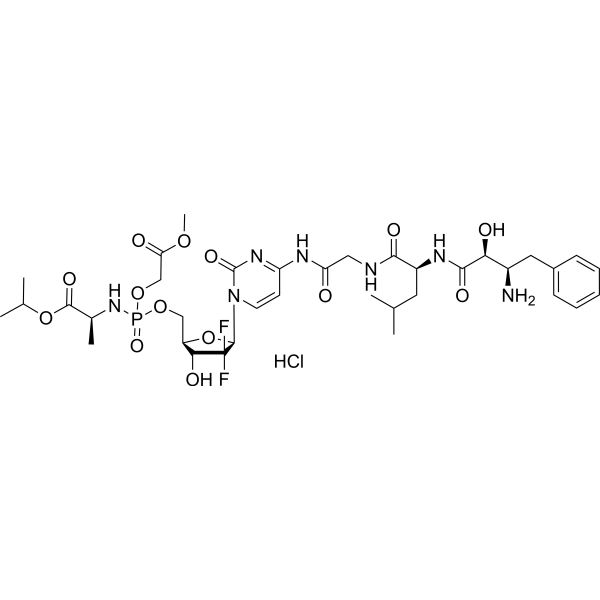










































































































































































![(25R)-Ruscogenin-3-yl α-L-rhamnopyranosyl-(1→2)-[β-D-xylopyranosyl-(1→4)]-β-D-glucopyranoside](http://file.medchemexpress.eu/product_pic/hy-n11983.gif)






























































![(R)-tert-Butyl 3-(4-amino-3-iodo-1H-pyrazolo[3,4-d]pyrimidin-1-yl)piperidine-1-carboxylate](http://file.medchemexpress.eu/product_pic/hy-43029.gif)






















































































































![[D-Ala2]-GIP (human)](http://file.medchemexpress.eu/product_pic/hy-p3247.gif)

















![2-(((3aR,4S,6R,6aS)-6-((5-Amino-6-chloro-2-(propylthio)pyrimidin-4-yl)amino)-2,2-dimethyltetrahydro-3aH-cyclopenta[d][1,3]dioxol-4-yl)oxy)ethanol](http://file.medchemexpress.eu/product_pic/hy-78055.gif)














































































































![6-(2-O-Methyl-beta-D-ribofuranosyl)-3-(2-oxo-propyl)-6H-imidazo[1,2-c]pyrimidin-5-one](http://file.medchemexpress.eu/product_pic/hy-152770.gif)



































![(2R-cis)-5-[Tetrahydro-5-(hydroxymethyl)-4-oxo-2-furanyl]-2,4(1H,3H)-pyrimidinedione](http://file.medchemexpress.eu/product_pic/hy-154613.gif)





















































































































![(4R,4aS,5aS,6aR,6bS,7aR)-4-Hydroxy-3,6b-dimethyl-5-methylene-4,4a,5,5a,6,6a,7,7a-octahydrocyclopropa[2,3]indeno[5,6-b]furan-2(6bH)-one](http://file.medchemexpress.eu/product_pic/hy-n10906.gif)





















































































































































































































































































































![9-β-D-[2'-Fluoro-2'-deoxy-arabinofuranosyl]-guanin](http://file.medchemexpress.eu/product_pic/hy-w334680.gif)



























































































































































![(R)-Ethyl 4-((3R,5R,8R,9S,10S,12S,13R,14S,17R)-3,12-dihydroxy-10,13-dimethylhexadecahydro-1H-cyclopenta[a]phenanthren-17-yl)pentanoate (Standard)](http://file.medchemexpress.eu/product_pic/hy-43476r.gif)
























































![Benzo[a]pyrene](http://file.medchemexpress.eu/product_pic/hy-107377.gif)













































































































































































![N-Acetyl [Leu28, Leu31] neuropeptide Y (24–36)](http://file.medchemexpress.eu/product_pic/hy-p10148.gif)










![[Des-Tyr1]-gamma-Endorphin](http://file.medchemexpress.eu/product_pic/hy-p10498.gif)

































































































![[Glp5,(Me)Phe8,Sar9] Substance P (5-11)](http://file.medchemexpress.eu/product_pic/hy-p3801.gif)

























































































































































































































































































































![[Deamino-Pen1,Val4,D-Arg8]-vasopressin](http://file.medchemexpress.eu/product_pic/hy-p10046.gif)
















































































































![[DPro5] Corticotropin Releasing Factor, human, rat TFA](http://file.medchemexpress.eu/product_pic/hy-p3684a.gif)



















































































































![[MePhe7]-Neurokinin B](http://file.medchemexpress.eu/product_pic/hy-p3862.gif)



















































































































































































































































































![Benzo[a]pyrene-d12](http://file.medchemexpress.eu/product_pic/hy-107377s.gif)


![Benzo[a]pyrene (Standard)](http://file.medchemexpress.eu/product_pic/hy-107377r.gif)





































































































































































































![(αR)-α-[[(1,1-Dimethylethoxy)carbonyl]amino]benzeneacetic acid](http://file.medchemexpress.eu/product_pic/hy-34663.gif)






















![[D-Trp34]-Neuropeptide Y](http://file.medchemexpress.eu/product_pic/hy-p1322.gif)























































































































































































































































































































































































































































































































































































































































































































































































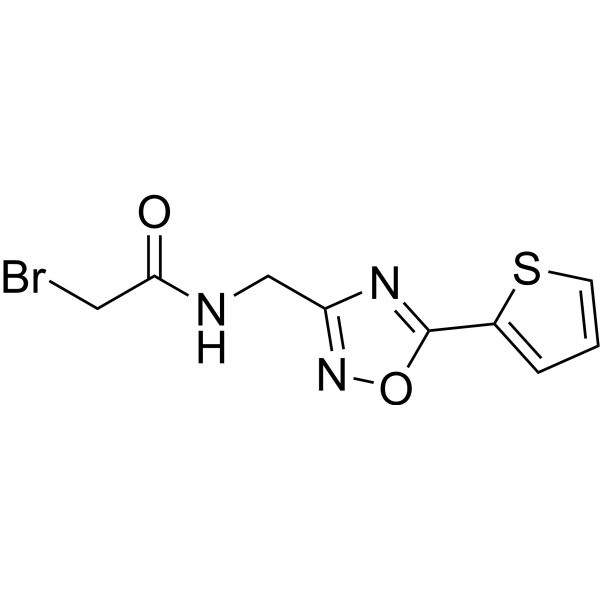

























































































































































































































































































































































































































































































































































































































































































































































































































































































































































































































































































































































































































































































































































































































































































































































































































































































































![[D-Trp34]-Neuropeptide Y TFA](http://file.medchemexpress.eu/product_pic/hy-p1322a.gif)







































































































































































































































































































































![[D-Pro4,D-Trp7,9] Substance P (4-11)](http://file.medchemexpress.eu/product_pic/hy-p3803.gif)









